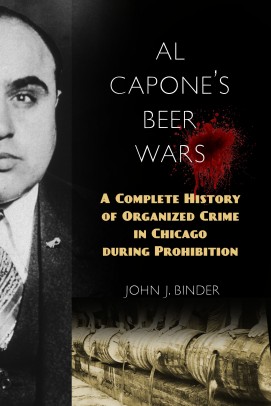UIC author chronicles Chicago mob during Prohibition
 Although much has been written about notorious gangster Al Capone, there has not been a complete history of organized crime in Chicago during Prohibition — until now.
Although much has been written about notorious gangster Al Capone, there has not been a complete history of organized crime in Chicago during Prohibition — until now.
UIC professor emeritus John Binder’s exhaustively researched new book, Al Capone’s Beer Wars: A Complete History of Organized Crime in Chicago During Prohibition, sheds light on the bootlegging gangs in the city and the suburbs. It also examines their other major rackets — prostitution, gambling, labor and business racketeering, and narcotics — from 1920 to 1933.
“People sometimes wonder why a business professor is studying organized crime, because to them it seems distantly related to the subject,” said Binder, associate professor emeritus of finance in the UIC College of Business Administration and a recognized authority on the history of organized crime in Chicago.
“However, in reality, the exact opposite is true. The sole goal of organized crime — whether it’s Capone’s gang during Prohibition, or his successors — is to enrich the members. They do it primarily by running illegal businesses, providing alcohol or gambling or whatever else, depending on the time period.”
Published by Prometheus Books, Al Capone’s Beer Wars highlights how the Capone gang — one of 12 major bootlegging mobs in Chicago at the start of Prohibition — gained a virtual monopoly over organized crime in northern Illinois and beyond. The book is based on 25 years of research and uses many previously unexplored sources.
“The years I’ve spent as a business professor studying finance and economics have been incredibly useful in understanding what these guys are really doing,” Binder said. “It has helped me write a complete history of Prohibition Era gangland in Chicago.”
Binder also describes the fight by federal and local authorities, as well as citizens’ groups, against organized crime. In the process, he refutes numerous myths and misconceptions related to the Capone gang, other criminal groups, the St. Valentine’s Day Massacre and gangland killings.
What emerges is a big picture of how Chicago’s underworld evolved during this period. This broad perspective goes well beyond Capone and specific acts of violence and brings to light what was happening elsewhere in Chicagoland and after Capone went to jail.
“The violence and political corruption that go along with organized crime are important and interesting, but they are only part of the picture,” Binder said.
Categories

